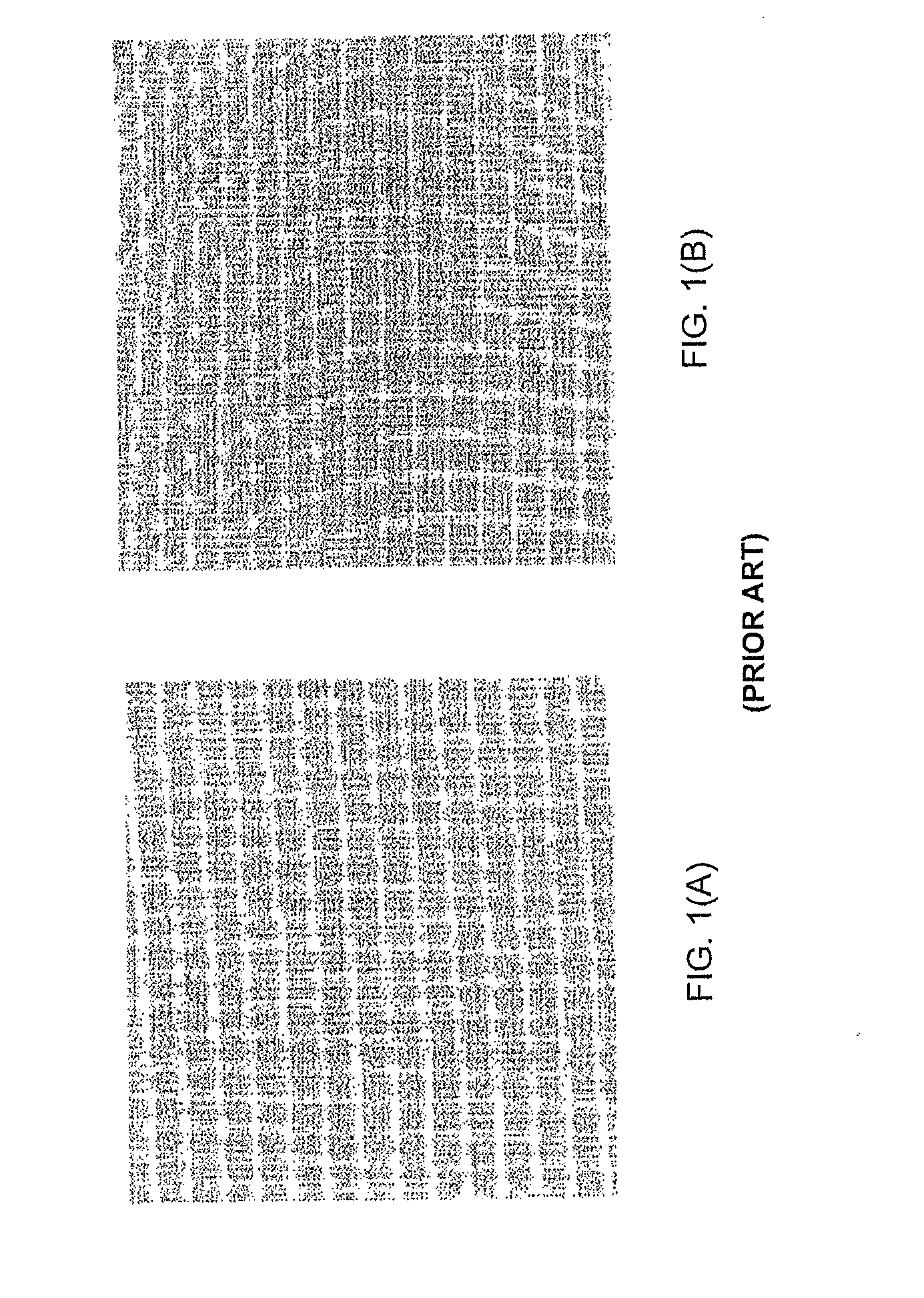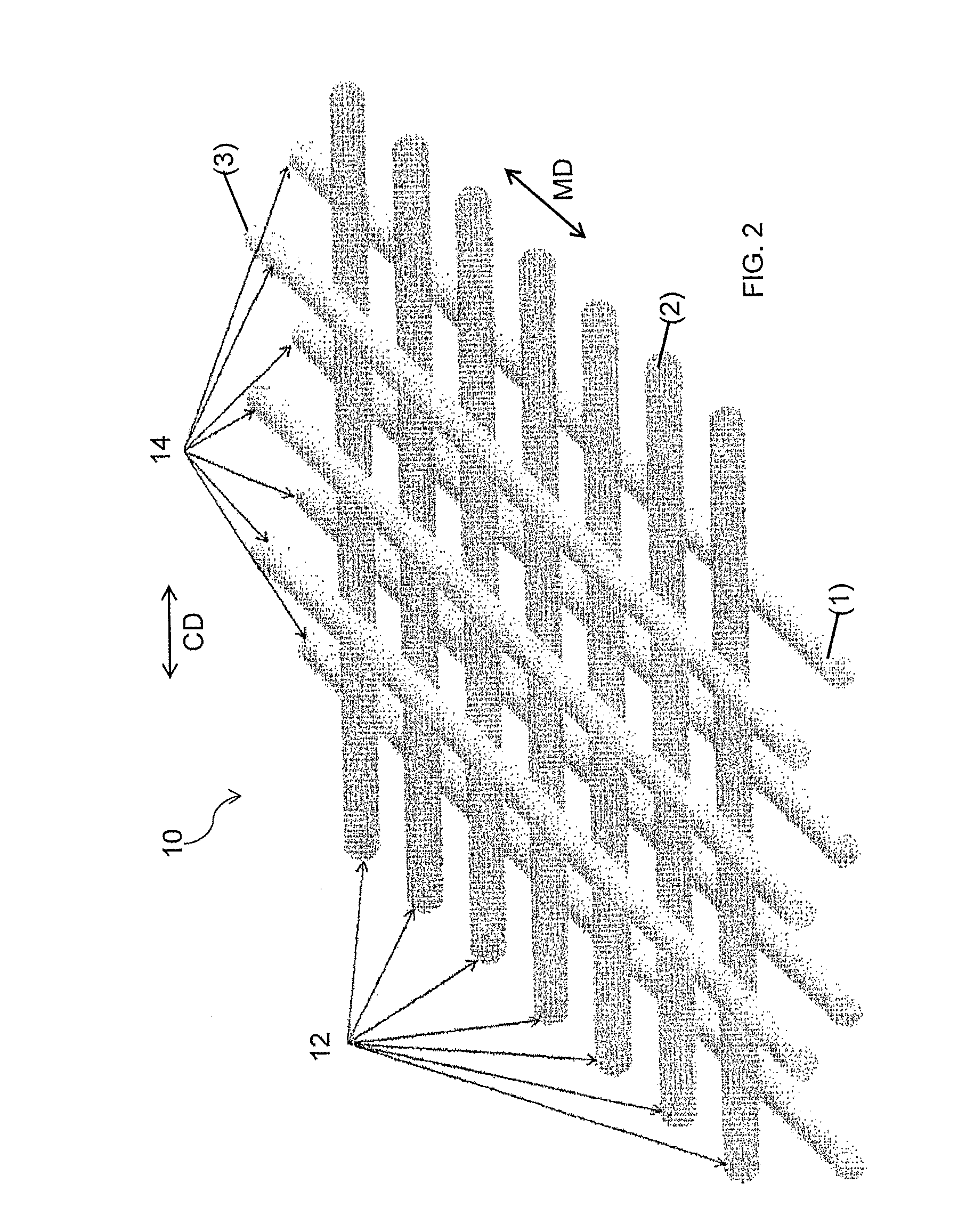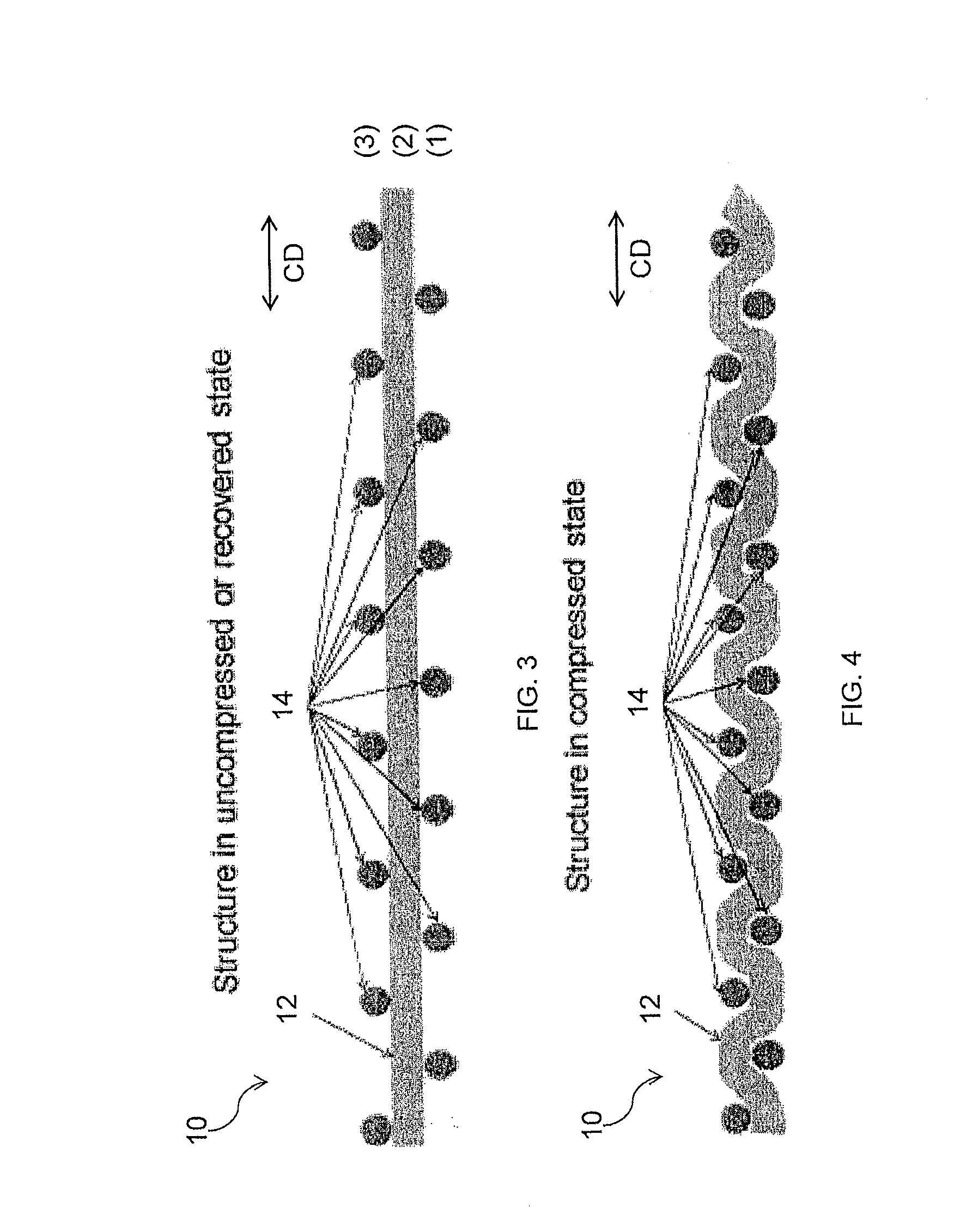Industrial fabric comprising an extruded mesh and method of making thereof
a technology of extruded mesh and industrial fabric, which is applied in the direction of press section, transportation and packaging, and other domestic articles, can solve the problems of low water handling efficiency, poor elastic behavior of new fabrics, and low density, and achieve excellent elastic behavior and high through thickness compressibility and recovery. , the effect of high through thickness
- Summary
- Abstract
- Description
- Claims
- Application Information
AI Technical Summary
Benefits of technology
Problems solved by technology
Method used
Image
Examples
Embodiment Construction
[0044]For purposes of the present invention, the terms “cross machine direction” and “transverse direction” are synonymous and sometimes simply referred to as “CD”, as are the terms “longitudinal direction” and “machine direction”, sometimes simply referred to as “MD”. However, the term “transverse” is sometimes also used to refer to strands / members / components which extend in a direction opposite to that of strands / members / components previously referred to. The meaning will be clear from the context in any particular instance.
[0045]Initially although a press fabric will be discussed, as aforesaid the present invention has application to other type fabrics or belts. With that said turning now more particularly to the figures, one embodiment of the present invention is a bicomponent extruded mesh 10 shown in FIG. 2 as having a first or bottom layer (1) comprised of functional strands 14 extruded in a parallel array oriented in the machine or running direction. A second or middle layer...
PUM
| Property | Measurement | Unit |
|---|---|---|
| total size | aaaaa | aaaaa |
| diameters | aaaaa | aaaaa |
| diameters | aaaaa | aaaaa |
Abstract
Description
Claims
Application Information
 Login to View More
Login to View More - R&D
- Intellectual Property
- Life Sciences
- Materials
- Tech Scout
- Unparalleled Data Quality
- Higher Quality Content
- 60% Fewer Hallucinations
Browse by: Latest US Patents, China's latest patents, Technical Efficacy Thesaurus, Application Domain, Technology Topic, Popular Technical Reports.
© 2025 PatSnap. All rights reserved.Legal|Privacy policy|Modern Slavery Act Transparency Statement|Sitemap|About US| Contact US: help@patsnap.com



